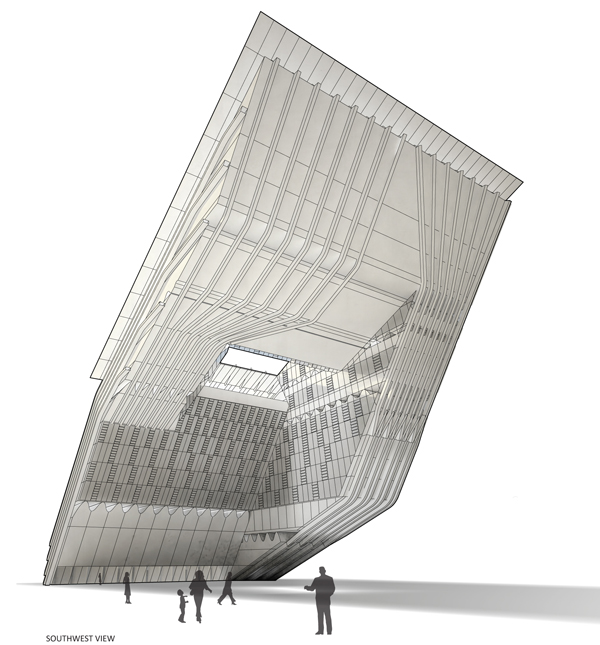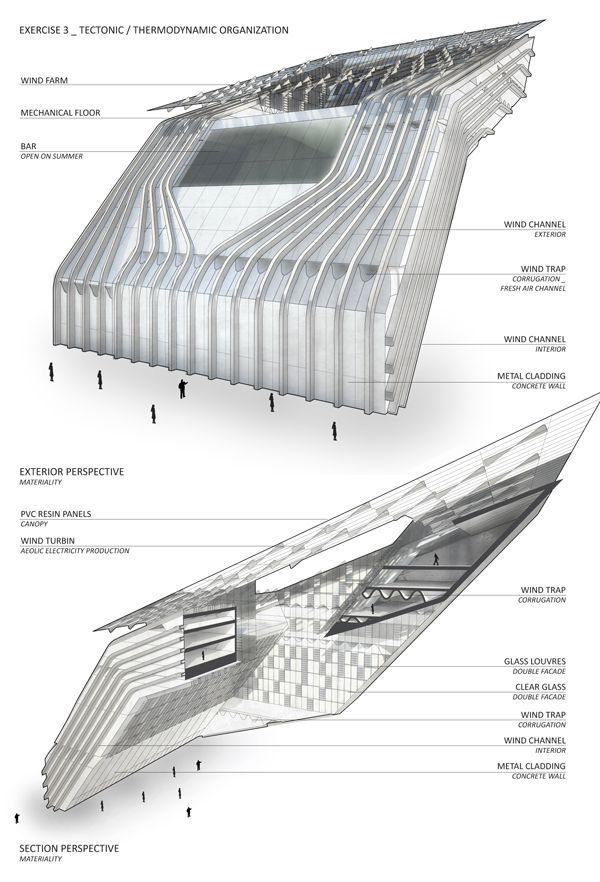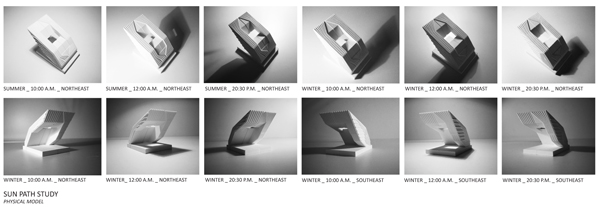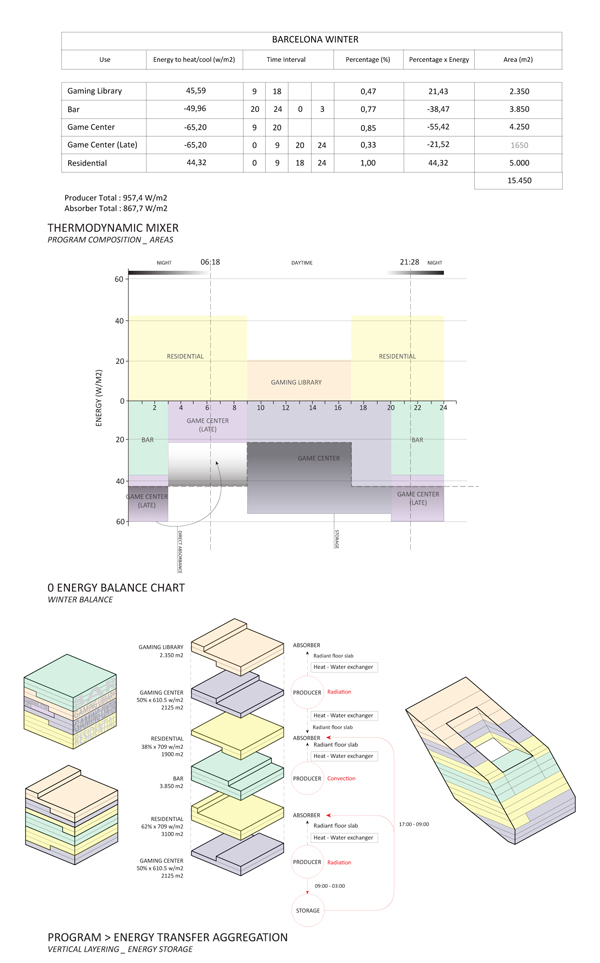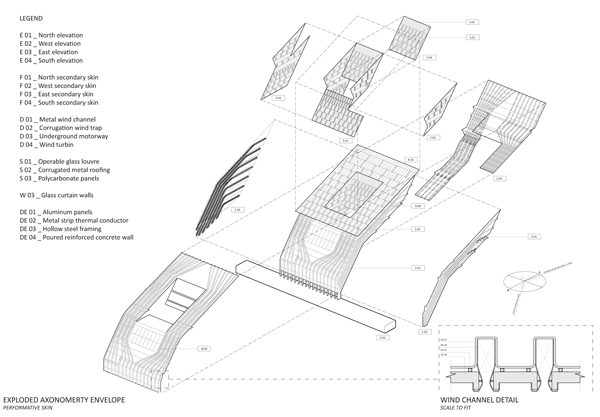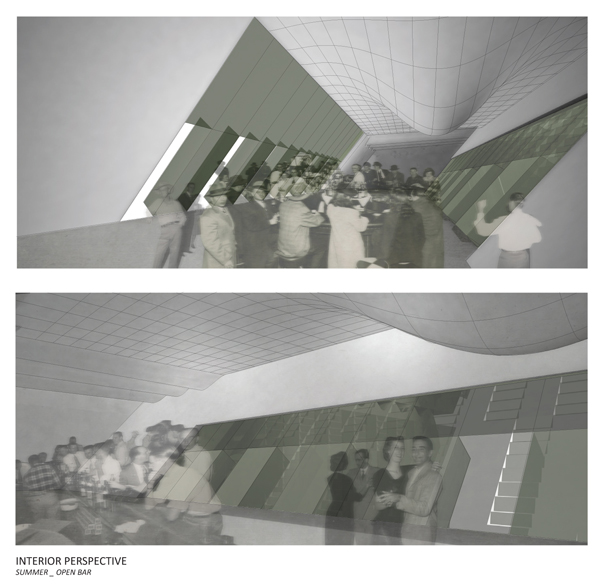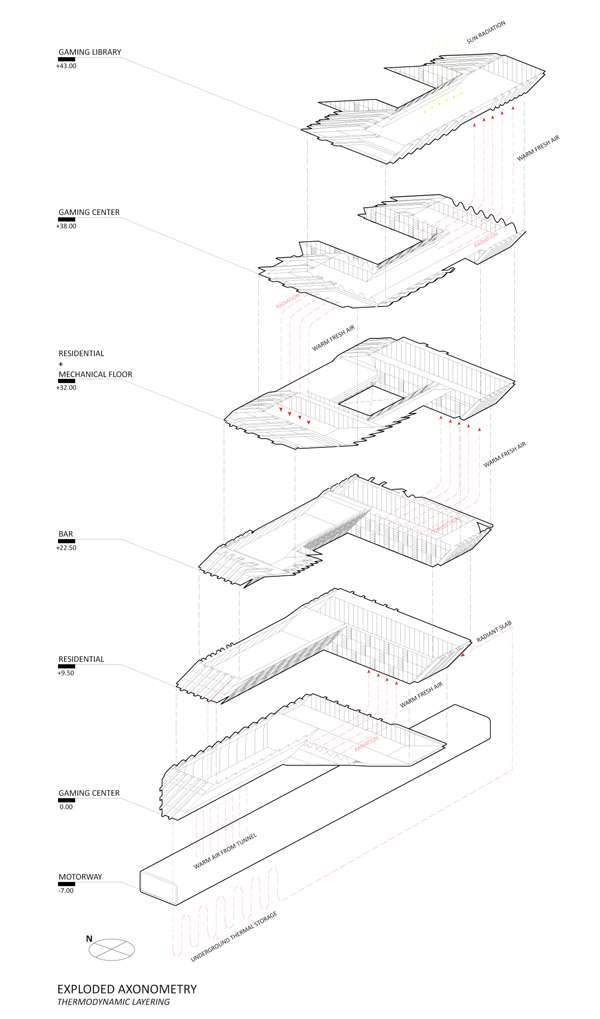Vertical Velocity is an experiment in conceiving and organizing a piece of architecture solely based on the climatic parameters of the site. This is achieved by investigating three basic types of heat transfer, or thermodynamics – convection, conduction, and radiation, and manipulating their respective behaviors accordingly, in relationship to the climatic site condition of the site, in order to create a predominantly passive architectural system. The design by Glenn Hajadi of HighStreetStudio, is conducted as a final project in Thermodynamic Somatism, core studio by Inaki Abalos and Renata Sentkiewitz, at Barcelona Institute of Architecture.
In establishing Mediterranean coast city Barcelona as the site, two essential external climatic conditions immediately surfaced. First, high annual solar insolation and second – a mild external natural temperature throughout the year (14 – 24 degree Celsius range). The first is to be avoided, and the second is to be desired. This means interior space can be completely ventilated to the exterior with very minimal architectural intervention.
The resulting form is a manipulation of cubic massing to reach these two objectives. Courtyard typology is implemented as a traditionally used passive system in tropical and sub-tropical regions to ventilate interior space, taking advantage of the wind velocity to travel through the thin interior space (no more than 13m deep) with the void in the middle to perform suction. The height of the building is determined to optimize the rising wind velocity in higher elevation.
A residential complex layered with a gaming and computer center is a key combination for a contemporary hybrid typology, chosen due to the amount of energy produced in 24 hour cycle, thus allowing the transmission of heat. The objective was to achieve zero energy balance building. Internal organization is constructed to optimize energy production – consumption by vertical multi layering. Heat producing programs are located below absorber programs – programs using heat.
During the winter months the architecture acts as a device in using the energy produced by game and computer centers during the day to heat residential spaces during the night. A wind trap is a hollow space sandwiched in between the two programs function as air to heat exchanger, as a result during the period when the computer halls produces heat; wind trap transfers it to heat the residential units via conduction.
In the summer months, cross ventilation takes the temperature down to comfortable level, reducing high level of humidity. The building is clad in metal panels with wind channels. These channels perform externally in increasing wind velocity along the façade and also internally as a medium to transport air from an underground motorway to help ventilate the lower portion of the building. Double skin located in the interior courtyard will reduce the velocity of air movement during the summer months when cross ventilation is used daily. A secondary roofing structure filters the direct sun light while still allowing light in. Wind farm of Aeolic turbine network is attached to the roof’s framing structure to produce electricity.

